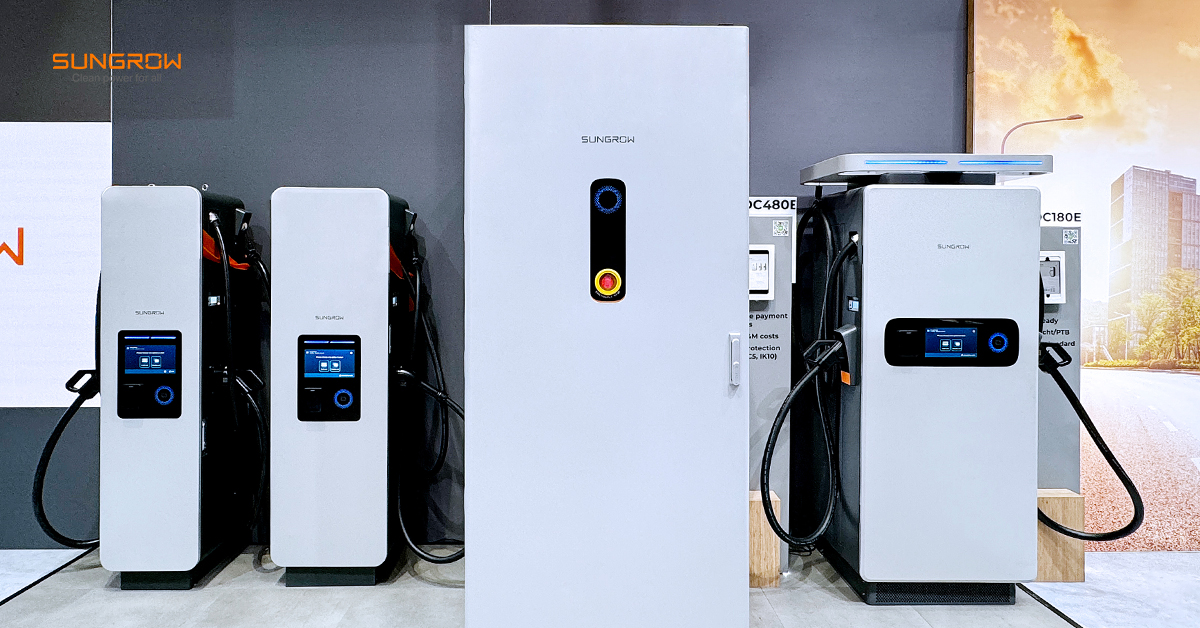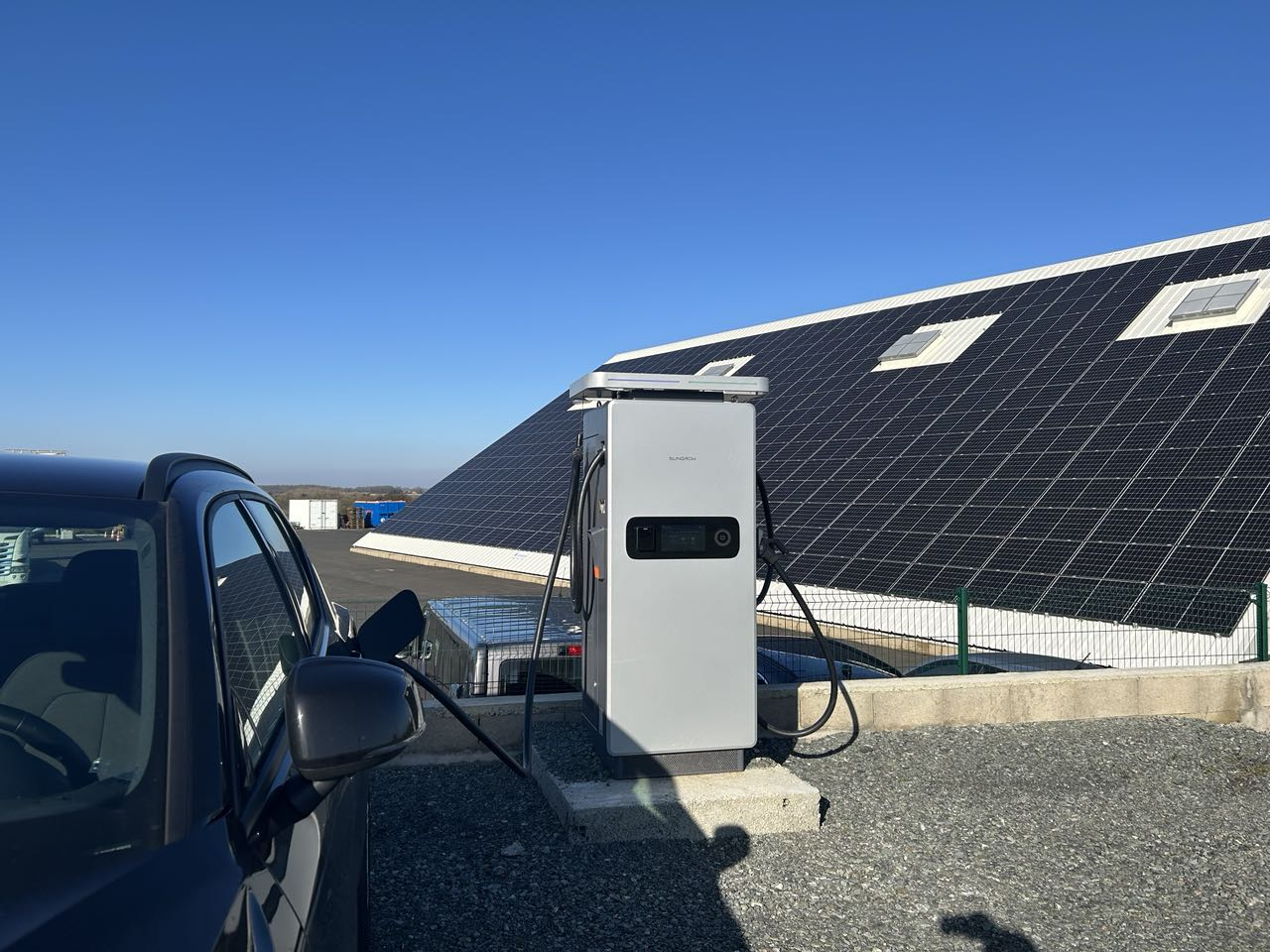Global EV sales are on the rise, which is not surprising given the unmatched advantages of EVs. Additionally, there is a growing awareness of eco-friendliness. This growth creates a high demand for charging infrastructure. Solar EV charging offers a green solution. These stations use solar energy to power EVs, reducing grid dependence and boosting sustainability.

What is a PV+ESS+EV Charging Station?
It is similar to a standard solar system but designed specifically for EV charging. It converts solar energy into electricity for EVs. It captures solar energy like any solar system and then transforms it into usable power for EV charging. This clean energy charges electric vehicles directly.
These stations need specific components to work. Each part serves a crucial function. The following are the basic components:
· PV Inverters: These devices convert solar panel-generated DC power to AC power. In other words, they make solar energy compatible with EV charging. The conversion ensures correct voltage for EV charging.
· Energy Storage: Battery systems store excess energy. They provide energy when sunlight is unavailable, such as during nighttime or on cloudy days.
· Chargers: These devices connect directly to vehicles. They deliver power at various speeds. Different solar powered EV charger types suit different vehicle needs.
How Does a PV+ESS+EV Charging Station Work?
The overall process is straightforward. Here are the steps:
Step 1: Solar Energy Generation
Solar panels absorb sunlight. They generate DC electricity. The amount of electricity generated varies depending on weather conditions and the sun's position. Panels track sun movement for best results. Modern panels are efficient even in low-light conditions.
Step 2: Conversion of Solar Power
Inverters like Sungrow’s PV inverters convert DC to AC power. This conversion makes the energy usable. The process happens instantly and continuously. Smart inverters adjust power output and match EV charging needs perfectly. Modern inverters reach very high efficiency.
Step 3: Charging the EV
AC power flows to charging stations. EVs connect through standard plugs and the charging begins automatically. Smart systems control power flow to match the charging speed with the car’s capacity. Safety systems monitor the process from start to finish.
Step 4: Energy Storage (if applicable)
Extra energy goes to batteries. These batteries supply power at night and also help during peak usage times. Modern battery solutions are durable, lasting many years, and efficiently charge and discharge. In addition, they feed excess energy back into the grid too.

Benefits of PV+ESS+EV Charging Stations
Solar charging brings multiple advantages. It benefits the environment, saves money, and provides energy independence:
1. Sustainability
Solar power creates zero emissions, reducing carbon footprints and addressing climate change. Each solar EV charging station saves tons of CO2 yearly. Green charging attracts eco-conscious customers too. Solar power keeps getting more efficient.
2. Cost Savings
Solar power is free and hence, operating costs of solar EV charging stations remain low. Users often pay less for charging. Maintenance needs stay minimal. There are government incentives too that prove valuable. Not to mention energy prices don’t affect solar charging.
3. Energy Independence
PV+EV charging stations operate independently of the grid, providing reliable charging and energy independence. Weather is the only limitation but it is easily solved via backup systems to ensure constant power. Local energy creation helps communities. Power stays available during outages.
Sungrow’s PV+ESS+EV Charging Solutions
Sungrow is a leading manufacturer of advanced PV+ESS+EV charging systems. The company’s products combine innovation with reliability. Its global installations highlight the brand’s reach and lead in charging technology. Sungrow’s PV+ESS+EV charging solutions offer many key features. These include:
ü High efficiency reaching 96.5% in DC chargers. They reduce energy waste and operating costs.
ü Smart power management system that optimizes charging cycles and energy distribution.
ü User-friendly interface with multiple payment options and easy plug-and-play capability.
ü Durable construction with IP65 protection for harsh weather conditions.
ü Seamless integration with existing PV, ESS and EV Charging for maximum efficiency.
ü Advanced safety features including overload protection and smart monitoring.
ü Future-ready technology supports the latest charging protocols and system upgrades.

Conclusion
PV+ESS+EV charging represents the future of clean transportation, combining renewable energy with EV technology to create an ideal green solution. The seasoned brand Sungrow leads this field with proven solutions. The company brings years of proven success. Its public EV charging systems work reliably in all conditions and meet strict quality standards. Visit the manufacturer’s website to browse its full range of solar EV charging products. Join the clean energy revolution with Sungrow’s proven technology.